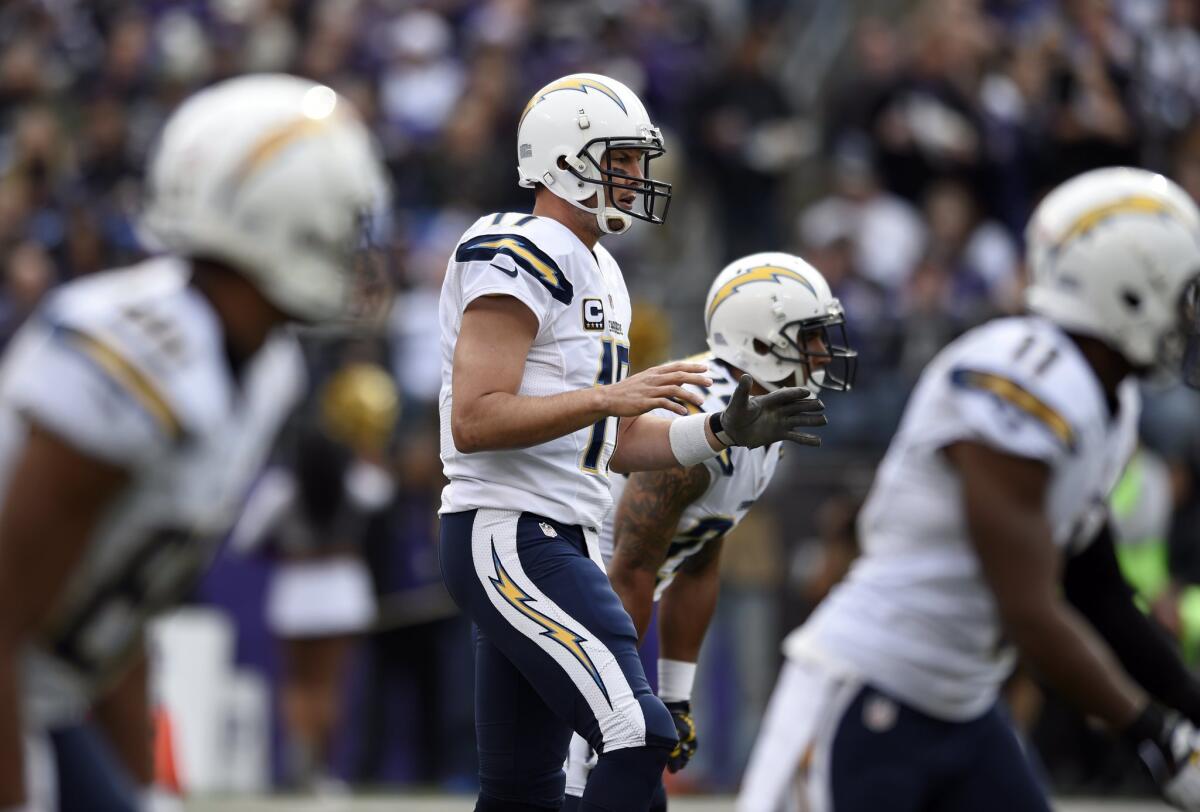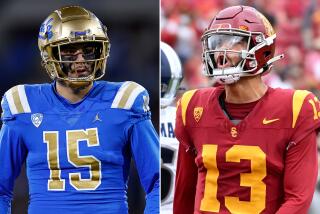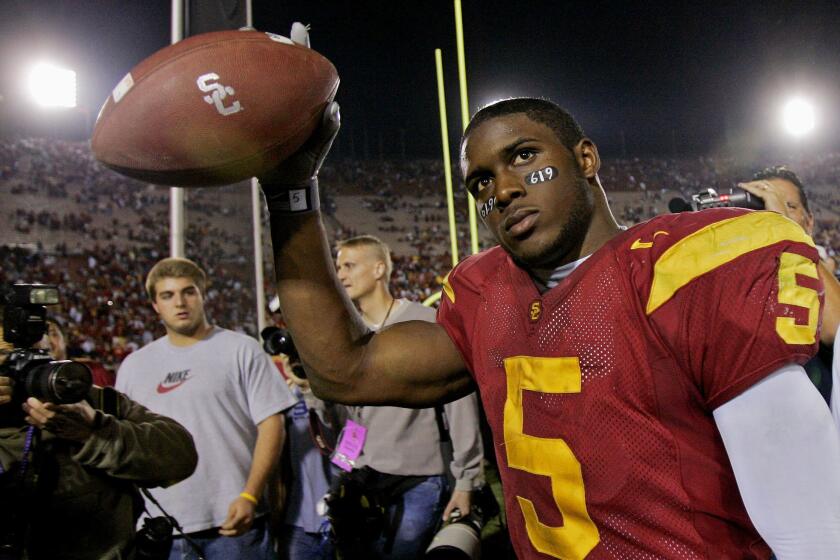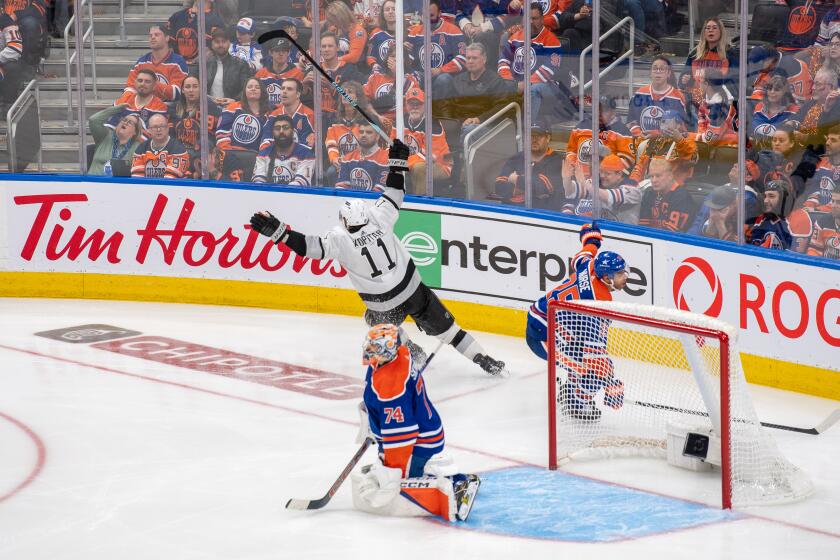Ask Sam Farmer: What is the meaning of NFL players’ pre-snap gestures?

Have a question about the NFL? Ask Times NFL writer Sam Farmer, and he will answer as many as he can online and in the Sunday editions of the newspaper throughout the season. Email questions to: sam.farmer@latimes.com.
Question: When the wide receiver lines up, looks to the sideline and then points, what is he doing? When the quarterback lifts his leg right before the play starts, what is he signaling?
Steve Shaevel
Woodland Hills
Farmer: When a receiver lines up, looks to the side and points, he’s checking with the official on the sideline — the head linesman on the visitor’s side, the line judge on the home team’s side — to make sure he’s correctly positioned along the line of scrimmage. The official might instruct him to move forward or backward so he’s not lined up in the neutral zone or too far behind the line.
As for why a quarterback sometimes stomps his foot before the ball is snapped, here’s Philip Rivers of the San Diego Chargers to explain: “It’s a snap-count thing when you’re on the road, and teams do it different ways. Some teams have the guard look back, so when you lift your leg, the guard taps the center to say, ‘Let’s go.’ Obviously, different teams, and we do it, they change up that snap count. So sometimes we don’t snap it on the first time I raise my leg. We wait, and we do it on the second time. Just like you’d do a hard count if you were at home. Some teams have a center look between his legs and then they go off the foot. So all the leg-raising is snap count in the shotgun when you’re on the road.”
Question: Is a horse-collar tackle enforced if a player is hooked on the back of the neck area only, or in front of the neck also?
Rick Immel
Chatsworth
Farmer: The NFL defines a horse-collar tackle as grabbing the inside collar of the back or side of the shoulder pads, not the front. The rule doesn’t apply to a runner who is inside the tackle box, or a quarterback who is in the pocket. A defender doesn’t need to successfully bring down the runner to draw the 15-yard flag, only cause the runner’s knees to buckle.
Question: I understand that the roughing the kicker penalty is necessary to protect him. He is in a very exposed and precarious position and could easily be injured. What I don’t understand is why are all bets off when it comes to protecting him if the kick is blocked. You see it time and time again when he is roughed and knocked around but it is OK because the kick is blocked. He is still exposed and vulnerable. Can you explain?
Walt Boyd
La Crescenta
Farmer: Safety is definitely a concern. That said, if a defensive player is taking the correct angle to block the kick, he might not be able to avoid making contact with the kicker. The league feels it’s not fair to handcuff defenders that way.
Fox’s Mike Pereira, the NFL’s former head of officiating: “It’s kind of like pass interference. When the ball’s touched, you can’t have pass interference. When the kick’s blocked, you can’t have roughing the kicker.” Typically, it’s only the player who makes contact with the ball who is immune to a roughing-the-kicker call. But the NFL rule book stipulates that if two defensive players are making an attempt to block a kick, and one of them runs into the kicker at the same instant the other blocks the kick, the foul for running into the kicker will not be enforced “unless in the judgment of the referee, the player running into the kicker or holder was clearly the direct cause of the kick being blocked.”
More to Read
Get our high school sports newsletter
Prep Rally is devoted to the SoCal high school sports experience, bringing you scores, stories and a behind-the-scenes look at what makes prep sports so popular.
You may occasionally receive promotional content from the Los Angeles Times.







